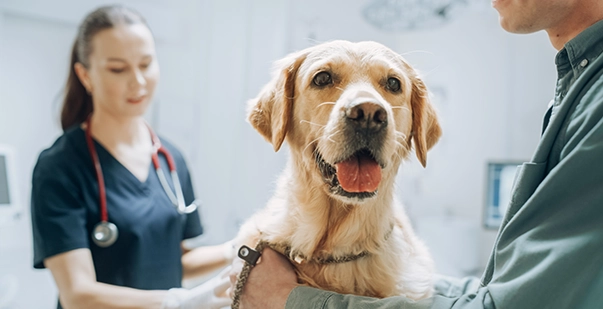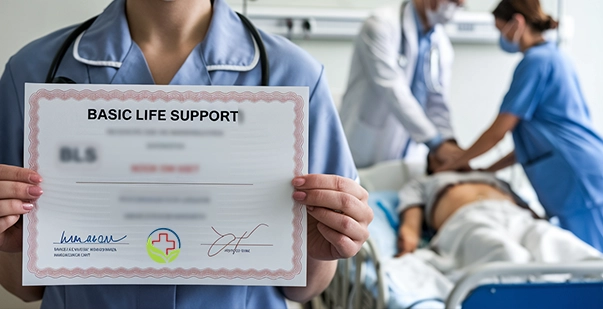Hyperventilation is a surprisingly common condition that can strike anyone facing stress or anxiety. It might seem like just a case of heavy breathing, but hyperventilation can have significant effects on your body and well-being. Research shows that around 9.5% of adults will experience hyperventilation at least once in their lives.
Hyperventilation occurs when breathing becomes so fast or deep that it disrupts the balance of oxygen and carbon dioxide in the blood. Symptoms include dizziness and tingling, chest pain, and fainting. Knowing what hyperventilation is, why it happens, and how to prevent it can help you take control of your breathing and improve your overall well-being.
Causes of Hyperventilation
Hyperventilation can occur due to various triggers, ranging from physical exertion to emotional stress. Recognizing these triggers can help manage and prevent episodes. Below are some of the key physical and psychological causes of hyperventilation.
- Physical Triggers
Physical triggers for hyperventilation can vary, but several common factors often contribute to episodes. Engaging in strenuous exercise can lead to heaving breathing as your body attempts to meet increased oxygen demands.
Additionally, medical conditions like asthma, lung infections, and chronic obstructive pulmonary disease (COPD) can disrupt normal breathing patterns, resulting in hyperventilation. Moreover, high body temperature due to fever can increase breathing rate as the body works to cool itself down. Furthermore, experiencing severe pain can cause rapid and shallow breathing, which may lead to hyperventilation.
- Psychological Triggers
Psychological triggers play a significant role in hyperventilation, often leading to rapid breathing episodes. High levels of anxiety and panic attacks can trigger hyperventilation as part of the body’s “fight or flight” response, causing you to breathe more quickly. Similarly, experiencing intense stress or emotional distress can lead to faster breathing, resulting in over-breathing.
Sudden feelings of fear or shock can also cause a spike in breathing rates, contributing to hyperventilation. Interestingly, even positive emotions like excitement can lead to rapid breathing if they become overwhelming
Read More: What is the Correct Ventilation Rate for Effective Chest Compressions
Symptoms of Hyperventilation
Identifying the hyperventilation symptoms is crucial for responding effectively, whether you’re experiencing it yourself or helping someone else. Hyperventilation can produce a variety of physical and behavioral signs that may seem alarming but are manageable with the right knowledge. Consulting a healthcare professional is important for diagnosing and treating over-breathing syndrome effectively.
Let us take a look at the common symptoms associated with this condition.
- Physical Symptoms
Physical symptoms of hyperventilation can significantly affect how you feel. Dizziness or lightheadedness often occurs because rapid breathing reduces carbon dioxide levels in the blood, leading to feelings of faintness.
Due to changes in blood chemistry, you might also experience tingling or numbness, particularly in the hands, feet, or around the mouth. Chest pain or tightness can arise, which may be mistaken for a heart issue.
Other symptoms include a dry mouth from frequent mouth breathing, blurred vision or spots in your sight and headaches due to changes in blood flow and oxygen levels in the brain. You may also notice your skin becoming cold or clammy as blood vessels constrict.
- Behavioral Symptoms
Behavioral symptoms of hyperventilation can greatly affect your daily life. Rapid breathing often happens without you realizing it until other symptoms start to show. You may feel like you’re struggling to catch your breath, even though you’re actually over-breathing. This discomfort can lead to feelings of panic or anxiety.
The lack of proper oxygen flow can also make it difficult to concentrate, adding to feelings of being overwhelmed. Understanding these symptoms is important for managing hyperventilation effectively
Common Hyperventilation Syndromes
Hyperventilation can sometimes be part of a larger set of conditions known as hyperventilation syndromes. These syndromes involve persistent or recurring episodes of rapid breathing that go beyond occasional hyperventilation. Some common syndromes associated with hyperventilation are as follows:
- Over-Breathing Syndrome
Over-Breathing Syndrome involves frequent, excessive breathing that isn’t always linked to specific causes like exercise or panic, leading to habitual patterns.
This leads to symptoms such as dizziness almost all the time, periods of tingling, and pressure in the chest, even when there is no immediate stress. These symptoms negatively affect one’s everyday life since one has trouble concentrating, performing duties as expected, or maintaining comfort during the day.
- Hyperventilation Syndrome
Hyperventilation Syndrome involves episodes of rapid breathing, which can lead to symptoms like lightheadedness, chest pain, and feelings of panic or fear. These episodes are often triggered by emotional stress, anxiety, or panic attacks. Unfortunately, this creates a cycle where stress causes hyperventilation, and hyperventilation increases stress, making the situation worse. Recognizing these triggers is crucial for managing the condition effectively.
- Respiratory Alkalosis
Respiratory alkalosis is a condition that results from prolonged hyperventilation. It causes the blood to become too alkaline due to decreased carbon dioxide levels. Symptoms include muscle cramps, nausea, and confusion. Managing respiratory alkalosis involves addressing the underlying cause of hyperventilation, such as anxiety or panic attacks, and restoring the normal balance of blood gasses in the body.
Treatments for Hyperventilation
Effective treatment of hyperventilation involves addressing both immediate symptoms and the underlying causes. Whether you’re experiencing it yourself or helping someone else, knowing the right methods can help you manage the condition and prevent future episodes.
- Immediate Actions
To stabilize your breathing rate, practice slow, deep breathing techniques. One effective method is pursed-lip breathing, where you breathe in through your nose and exhale slowly through pursed lips.
Incorporating relaxation methods such as progressive muscle relaxation or guided imagery can further help calm your body and mind.
Another technique is breathing into a paper bag to increase carbon dioxide levels in your blood. However, this should only be done under the guidance of a healthcare professional, as it may not be suitable for everyone. These strategies can be beneficial in managing hyperventilation and promoting a sense of calm.
- Medical Treatments
If hyperventilation is caused by an underlying condition like anxiety or asthma, your doctor may prescribe medications such as Doxepin, Alprazolam (Xanax), and Paroxetine (Paxil) to help manage these conditions. In addition to medication, therapeutic approaches can provide valuable support in addressing the underlying issues contributing to hyperventilation.
Cognitive-behavioral therapy (CBT) helps individuals manage anxiety and panic disorders by teaching them to identify and reframe negative thoughts. Similarly, mindfulness-based therapy helps by encouraging present-moment awareness and breathing regulation.
- Lifestyle Adjustments
Regular exercise can help improve your breathing and reduce stress, which may prevent hyperventilation. To manage emotional triggers, it’s helpful to include stress-relief activities like meditation, yoga, or deep breathing exercises in your routine. Additionally, maintaining healthy habits such as eating a balanced diet, getting enough sleep, and limiting caffeine and alcohol can further lower anxiety and stress.
Hyperventilation in Different Age Groups
The signs and symptoms of hyperventilation can vary depending on the age groups already mentioned. It is important to identify these differences so as to adjust the response for each individual appropriately. Therefore, here is a summary of how hyperventilation affects different age groups, such as children, adults, and elderly citizens, regarding their management.
| Age Group | Characteristics | Common Triggers | Symptoms |
| Children |
|
|
|
| Adults |
|
|
|
| Elderly |
|
|
|
Tips to Manage Hyperventilation
Managing hyperventilation effectively involves using practical techniques and strategies to control your breathing and reduce symptoms. Here are some useful tips to help you understand how to stop hyperventilating when it occurs:
- Practice Slow Breathing: Focus on taking slow, deep breaths. Inhale deeply through your nose for a count of four, hold for a count of four, and then exhale slowly through your mouth for a count of four.
- Use Pursed-Lip Breathing: Breathe in through your nose and then exhale through pursed lips as if blowing out a candle. This helps to slow down your breathing rate and keep your airways open.
- Stay Calm: Try to stay calm and remind yourself that hyperventilation, while uncomfortable, is usually not dangerous. Practice relaxation techniques such as visualization or listening to calming music to help reduce anxiety.
- Progressive Muscle Relaxation: Tense and then slowly relax different muscle groups in your body. This can help reduce overall tension and improve your ability to manage stress.
- Create a Relaxing Environment: If possible, move to a quieter, more comfortable space where you can focus on calming yourself. This can help lower your stress levels and reduce hyperventilation.
- Avoid Triggers: Identify and avoid specific triggers that may lead to hyperventilation, such as caffeine, smoking, or certain stressful situations.
- Consult a Healthcare Professional: If hyperventilation is frequent or severe, it’s important to seek advice from a healthcare provider. They can help identify underlying causes and recommend appropriate treatments or therapies.
- Consider Therapy: Cognitive-behavioral therapy (CBT) or other forms of therapy may help manage anxiety and stress that contribute to hyperventilation.
Read More: 9 Basic Life-Saving Skills That Will Help You Save A Life
Take Control of Your Breathing Today!
Hyperventilation can be caused by different psychological and physical issues. Some hyperventilation-related disorders, such as diabetic ketoacidosis, are considered medical emergencies. In contrast, serious or life-threatening causes of hyperventilation are typically accompanied by other symptoms. If someone is hyperventilating, they should be calm and use methods of self-care like nose or belly breathing to slow and stabilize their breathing rate. Seek medical assistance if you suffer unexpected shortness of breath, especially if it lasts long after you’ve taken a rest. Learning how to manage hyperventilation effectively is crucial for improving both immediate symptoms. Enrolling in a specialized first aid course can provide you with valuable skills and knowledge to handle hyperventilation confidently.










